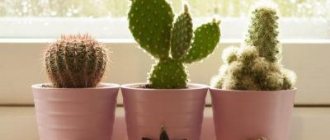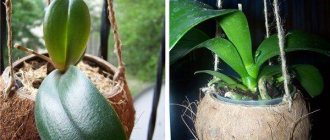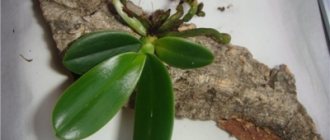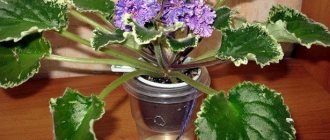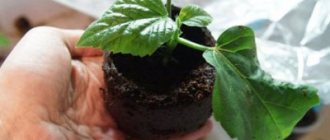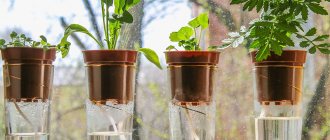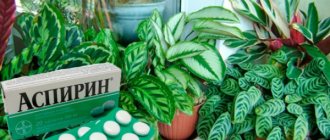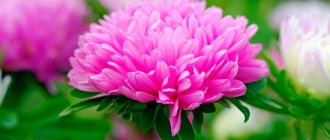Plants » Flowers
0
1524
Article rating
Kira Stoletova
In the wild, orchids attach themselves to the bark of trees and extract nutrients from their aerial roots. When growing at home, the orchid is provided with conditions close to natural. Tree bark serves as a suitable substrate for orchids. It is chemically inert, allows air to pass through well and retains moisture during watering.
Preparing bark for orchids
Which one is better?
Orchid bark can be purchased at the store or collected yourself. It can only be removed from dead trees, where the presence of resin, harmful insects and pathogenic microorganisms is excluded. In addition, the material peels off freely from the wood surface. The bark of many species is suitable for growing orchids, but experienced gardeners prefer only some of them.
Sosnovaya
Pine bark is considered the best option for planting orchids.
This is due to its availability and several other advantages:
- ease of collection;
- contains phytoncides that prevent infection of the plant by various pests;
- porosity, due to which the material perfectly absorbs moisture;
- sufficient thickness to allow the epiphyte roots to reliably grip.
Oak
Oak is ideal for substrate preparation due to its low acidity and high nutrient content. However, when collecting and preparing it, a number of problems arise:
- high hardness, making processing difficult;
- difficulties in finding a large oak tree, since such trees do not grow in all regions;
- the need for prolonged processing before use.
Florists recommend giving preference to cork oak bark, which has a high degree of moisture absorption.
Other conifers
Pine bark can be easily replaced with spruce bark, since both materials have the same properties. In general, orchids grow well in a substrate containing raw materials taken from any coniferous trees, for example:
- cedar;
- thuja;
- larches, etc.
Orchid bark
Description
What kind of bark does an orchid need? Bark is the name given to all layers of wood tissue that are located on the outer side of cadmium. Bast fibers are not included in its composition. Such parts of the tree are not harvested or used for floriculture.
For orchids, pine bark is most often used.
orchids are grown on them .
Suitable material can be found in the forest or park. First of all, it is worth visiting those areas where older coniferous trees grow.
Kinds
What bark is suitable for growing orchids? raw materials from coniferous trees for growing orchids . For us it is pine, less often spruce.
Which tree bark is suitable for an orchid? Pine is more popular among domestic flower growers. Spruce is considered somewhat more resinous, although in other qualities - useful properties and structure it is not inferior.
They take material from long-dead trees :
- The material peels off freely is the most suitable;
- The tissues were mostly freed from resin and fungal pathogens under the influence of natural phenomena;
- There are practically no insects in such material, but there are larvae, and you have to get rid of them.
Attention! It is not recommended to use the bark of deciduous trees, because the tissues of some species contain substances that slow down the growth of orchids.
But many orchidists prefer oak layer , noting a significant amount of nutritional components and lower acidity compared to pine.
Experts note that the layers of hardwood do not peel off, so preparing it yourself is problematic.
And there is practically no industrial harvesting of deciduous trees, so this component is not found .
Raw materials from other conifers, such as cedar, larch, thuja, decompose more slowly, which means they are reluctant to release nutrients to the epiphyte.
Benefits for plants
In orchid growing, the following qualities of the pine layer are valued, useful for orchids , most of which are epiphytes:
- Air permeability due to the presence in the composition;
- Moisture capacity and ability to quickly drain excess water;
- Antiseptic effect due to lignin in the composition;
- The content of nitrogen, ash and oxygen, vegetable fats and wax, useful trace elements and mineral acids is significant.
Why can't you take it from rotten plants?
Material is taken only from old, dry, but not rotten trees.
To avoid orchid disease, choose clean, rot-free bark.
The layer from plants where decay processes have begun is not taken for floriculture in order to avoid the introduction of pathogenic bacteria to the roots of orchids.
Store-bought substrate or homemade one?
What is better: using store-bought bark or self-collected bark? Each gardener makes this choice independently. Opinions are shared here :
- Some orchid growers prefer to procure raw materials themselves;
- Others trust industrial production.
Each point of view is reasoned. Those who are for independence note the advantages :
- Knowing for sure that the material was taken from the right tree at the right time;
- High-quality processing and disinfection;
- Cutting the optimal fraction;
- No unwanted impurities.
In addition, to buy tree bark in a store, you need to spend money without a guarantee of quality, because purchased bark is recommended to be processed in the same way as collected bark yourself.
On the other hand, not everyone has the opportunity to visit the forest and find a suitable tree. Then the material must be boiled, hopelessly ruining the dishes.
Then cut it and dry it thoroughly somewhere, and this is time-consuming and requires the need to allocate a decent part of the room.
In addition, foreign manufacturers offer a substrate from those species that do not grow here (cypress, vines), but are found in regions where orchid epiphytes are naturally distributed, and therefore suitable specifically for orchids .
Preparation for sale on an industrial scale
Wood processing enterprises debark wood, obtaining large, even gigantic volumes of by-product material.
Attention! The bark is removed from freshly cut trees, in which life processes have not completely stopped at the time the material was removed. Therefore, there are remains of bast on the bark.
One of the methods of waste-free disposal is to direct waste to the production of crop products:
- To do this, the wood layer is cleaned of dust, sand, and wood fibers;
- And they are sent to enterprises that specialize in the production of agricultural products;
Before use, the bark is initially thoroughly cleaned and washed. - Here the material is disinfected, crushed and calibrated;
- Then, if necessary, mixtures and complexes are formed and packaged.
Can I use store bought?
Flower growers who do not have the opportunity to independently prepare bark for the substrate can purchase it in the store. The industrial version also needs processing, and has its advantages and disadvantages.
The advantages include the possibility of purchasing raw materials taken from species growing exclusively in southern latitudes: vines, cypress, etc. Among the disadvantages, it is worth noting the uneven fractions and the inability to check the condition of the substrate when purchasing.
In many cases, after opening the packaging, the raw materials are found to have numerous defects: mold, mustiness, the presence of undesirable impurities, etc.
There are a large number of options for ready-made substrates for orchids, among which the most popular are:
- Orchiata – contains radiata pine bark, which has undergone high-quality processing without loss of beneficial properties and nutritional value.
- Seramis + – in addition to bark, it contains clay, complex fertilizers, and a moisture indicator. The composition is quite loose and water-permeable. Recommended for growing large numbers of orchids (for example, in greenhouses).
- EffectBio – prepared on the basis of raw materials from Angara pine. In addition to it, it contains dolomite flour, which lowers the acidity level. The product is thoroughly dried and treated against harmful insects.
- Royal Mix - obtained from calibrated bark that has undergone high-quality heat treatment. In addition to it, the composition includes large peat, coconut fiber, and charcoal. It has a sufficient content of zinc, magnesium and iron.
- Morris Green - made from well-dried and pest-treated bark with large fractions. Allows you to grow orchids both in substrate and on blocks.
Where to find suitable material
The pine bark used to create the substrate must be taken from a dead or fallen tree. Removing bark from a living pine tree may be more convenient, but it does not make sense. Only the dead parts have been sufficiently weathered by time, weather and insects to be of interest as starting material. In addition, dead pine contains significantly less resinous fractions, which orchids do not like so much. Procurement of material can be carried out in at least two ways:
- A pleasant walk around the city, park, or reserve can be combined with a search for dead fragments of pine bark. Stumps, fallen or dried trees are suitable.
You can prepare pine bark yourself - If there are no pine trees or parkland with these trees nearby, try to find a sawmill. Various wood is processed there, including pine. Find advertisements in newspapers or on the Internet for the sale of lumber, call and find out if pine is being processed, find out how you can find a sawmill, and negotiate a sale. It will be much cheaper than buying a ready-made substrate, and if you’re lucky, you can get some material for free.
Requirements for the starting material for preparing the substrate yourself:
- The bark should contain as little resin as possible. The best layers are the ones that can be easily broken into pieces in your hands.
- There should be no dark, sun-burnt areas. If there are darkened layers on the fragments, they should be carefully removed.
There should be no dark areas on the workpieces - Sometimes pieces come across along with wood. In this case, it is necessary to separate the bark layer from the trunk fragment.
- During collection, you need to gently tap the trunk to knock dirt and insects off the material. Rotting areas or areas undermined by insects are also removed, but this can be done at home using a knife or pruning shears.
DIY preparation
Independent preparation for the substrate requires compliance with several rules and is carried out in stages.
Tools
For collection and subsequent processing, you need pruning shears and a large cooking container.
Collection
Harvesting can be done in places where suitable trees grow: in parks, forest parks, forested areas, or you can ask at a sawmill.
Basic recommendations:
- Use only sawed, fallen or dead trees that have already dried out. This is due to the absence of resin, pests, bacteria and fungi on them.
- Choose only those raw materials that do not have growths, dust and stains.
- It should peel off easily from the wood surface, and its thickness should be at least 1 cm.
- Carry out the preparation in dry and sunny weather.
- Collecting material from rotten trees is unacceptable.
Resin cleaning
Before the processing procedure, the bark is inspected for the presence of frozen resin. Detected fragments are rejected. Flower growers also recommend cleaning the top gray layer with a metal sponge, which may also contain resin residues.
Grinding
Using pruning shears, cut the bark into pieces of equal size.
The optimal fraction size for small orchids is from 1 cm to 1.5 cm, for large epiphytes – from 2.5 cm to 3 cm.
Tiny fragments can be used for planting baby orchids, as well as for preparing substrates with a complex composition.
Do I need to wash or soak?
It is not necessary to wash the bark. It is best to use a galvanized bucket for soaking. Algorithm of actions:
- Carefully place the bark fractions in a container and press down with a heavy object to prevent them from floating.
- Pour a solution of any insecticide, leaving 5 cm sides.
How to cook?
The process includes several stages:
- Place the container with the soaked bark on low heat.
- Place a lid with a weight on top so that the substrate does not float up.
- Boil for 1-1.5 hours. Large pieces are cooked for about 2-3 hours.
- Remove the container from the heat and set aside to allow the water to cool.
- Drain the cold liquid.
- Drain the bark in a colander.
- Wait until the remaining liquid drains.
This will get rid of possible pathogenic organisms and pests. Also, during this time, the structure of the raw material will be cleared of various contaminants, and in the future it will pass water well.
If the soaking process is skipped, then cooking must be carried out three times in ordinary tap water, each time draining the old water and pouring in new water.
Drying
Drying is recommended exclusively in fresh air. In clear weather, the raw materials are laid out in a thin layer in direct sunlight, in damp weather - under a canopy. On average, the duration of this procedure is about one month. To check the readiness of the raw materials, one fraction is broken into two parts - it must be dry inside.
In order to speed up the preparation process, the drying time can be reduced to one week. But after this, calcination in the oven should be carried out for at least 1-2 hours.
Calcination in the oven
Processing in the oven completely replaces cooking. The process includes several manipulations:
- Place the raw materials in an oven preheated to 75-80 °C.
- Heat for 20 minutes.
- Remove material and store.
How to plant a flower: step-by-step instructions
Planting an orchid in the bark is not difficult, but it must be done carefully so as not to damage the roots.
Preparation
- First the bark is prepared.
- The components of the soil are combined in the required proportions.
- Next, the resulting substrate is soaked in water and left for 30-40 minutes. It is important to carry out this activity before planting, since too dry bark will not be saturated with moisture in a short time, and if you water it for about an hour, you can harm the flower.
- The pot is selected of a sufficient size, it is pre-disinfected with potassium permanganate or boiling water.
- When both the pot and the soil are ready, the orchid is carefully removed from the old pot and washed with water.
Inspection of roots
- After the plant has been washed with running water, it is necessary to inspect the roots and remove rotten and dry roots.
- The cut areas are treated with activated carbon. If insects are present on the root system, it is treated with an antifungal agent.
Planting a plant in a pot
- A drainage layer 2-2.5 cm thick is placed in the pot, and a piece of new soil is placed on top of it.
- Then the orchid is carefully placed in the pot and the empty space is filled with the remains of the substrate. There is no need to compact the soil; it is added gradually and the pot is easily shaken, so the soil will fill the entire space.
Watering
The orchid is not capricious in caring for it. It is enough to spray it with water every 2-3 days. Water the flower once every 7-10 days , it depends on the soil conditions.
Use for growing and transplanting
Large fractions are used as an independent substrate and for growing large orchids. Small pieces are well suited for preparing complex compositions and planting baby plants.
As part of potting soil
First, lay pieces of foam or expanded clay on the bottom of the pot in a layer of 3-4 cm. Then wood bark, the first 2-3 layers of which should consist of large fractions. After this, the roots of the epiphyte are lowered into the container. They should fit freely and be above the lower layers.
Next, holding the plant suspended, small pieces are poured into the pot, placing them between the roots.
The bark should be poured only up to the root collar, since its overlap is unacceptable.
In addition to the bark, you can add the following components in equal parts to the container:
- sphagnum moss;
- charcoal;
- peat.
A substrate with this composition allows air to pass through well and retains moisture after watering.
Read more about what should be included in the substrate and how to prepare it yourself here.
Landing on the block
In some cases, an orchid is planted not in a substrate, but in a block constructed from bulky pieces of bark. A small amount of sphagnum is laid on the block, and the epiphyte is pressed on top. A fishing line or wire with low rigidity and thickness is used as a fixing device.
As an independent substrate
The procedure consists of several stages:
- Soak the bark for 2-3 days to ensure it retains moisture.
- Remove from water and dry for ½ day.
- Cut if necessary.
- Place a layer of drainage on the bottom of the container and large fractions of bark on top.
- Next, place the orchid roots and carefully straighten them.
- Place small pieces of raw materials, periodically tapping the container.
Is it possible to prepare the substrate yourself?
Many gardeners prefer to use homemade mixtures. In this case, you can be sure that the composition fully corresponds to what was put in it. It has the following advantages:
- low cost;
- ideal composition for a specific type of orchid;
- high quality.
But there is a minus. To prepare the composition yourself you will have to work hard. For some ingredients you need to go into the forest.

